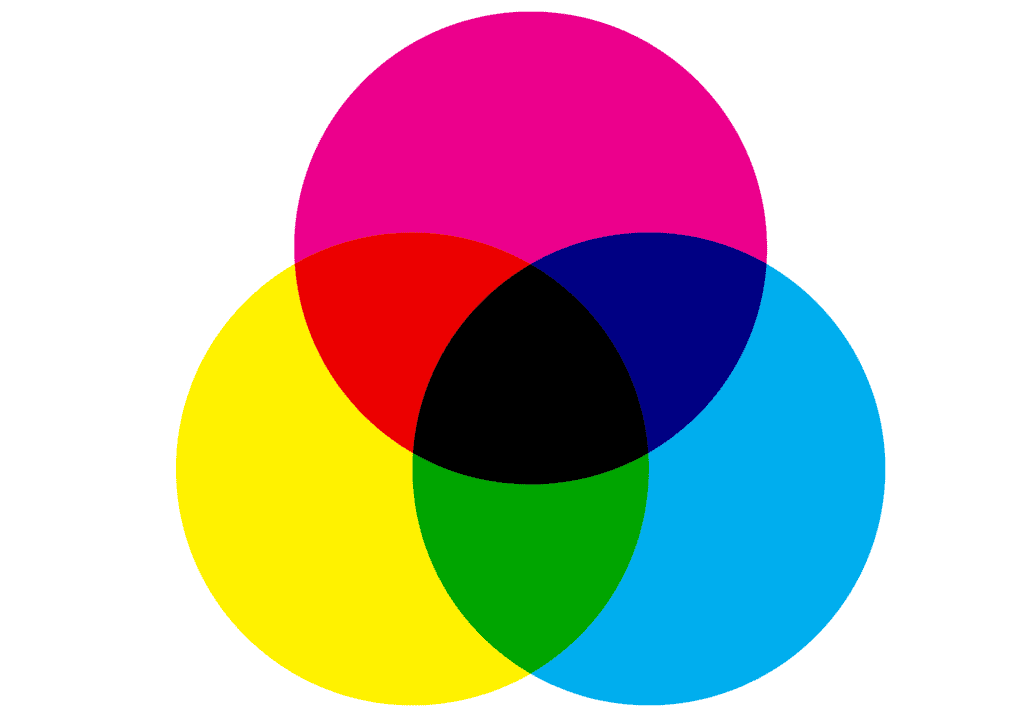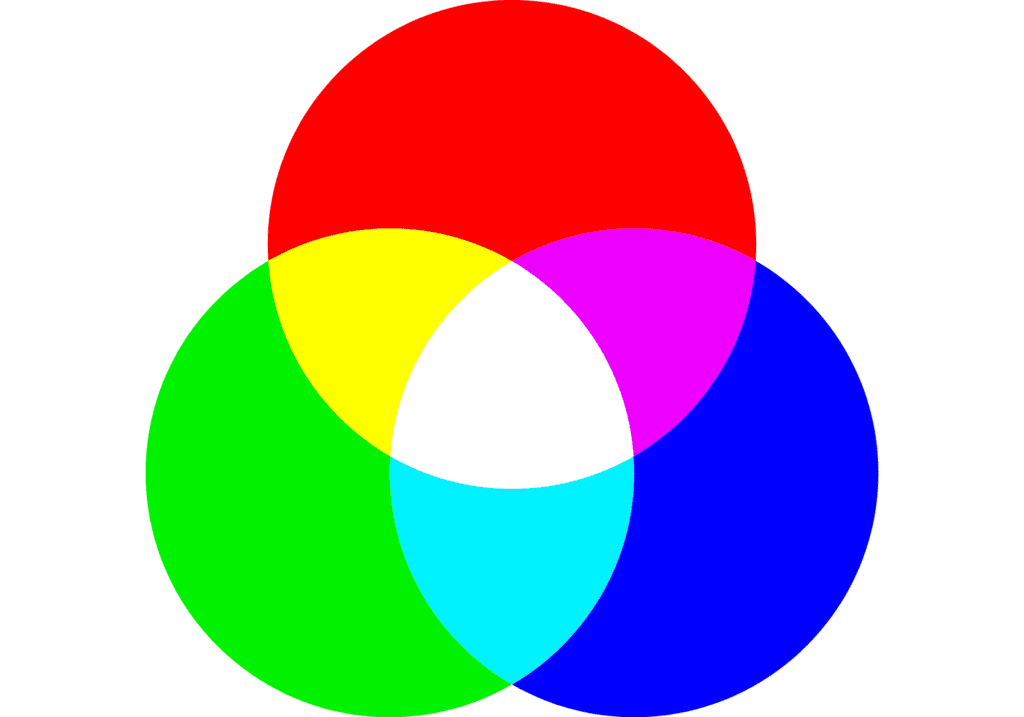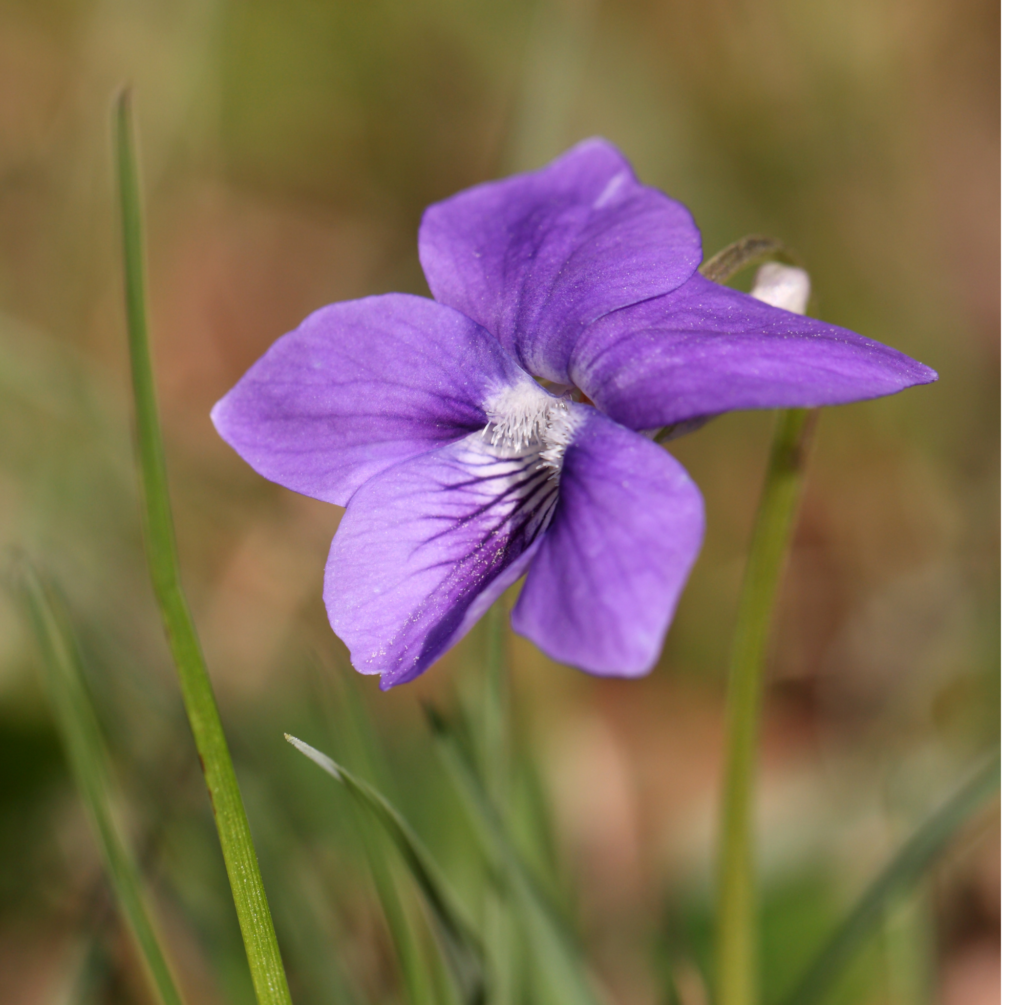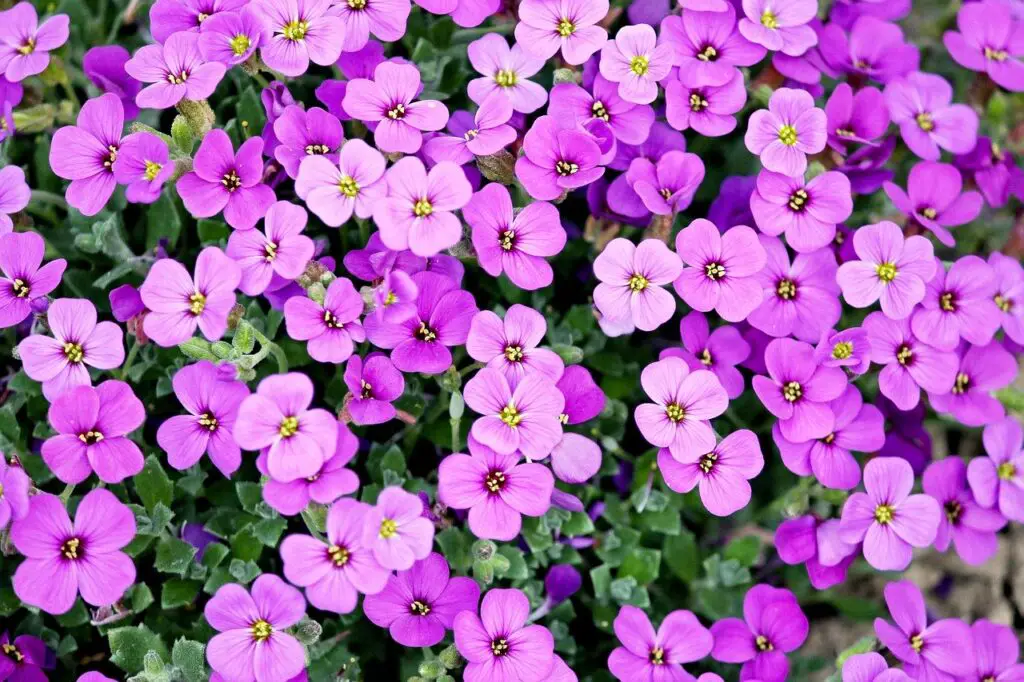Some people call it purple and some call it violet. For a long time, I also thought both purple and violet are different types of purple colors. Let’s see in simple terms what the difference is between purple and violet.
Purple and violet are two different colors. Violet is the true color that we can see naturally in the world. Also, violet is made from a single wavelength of light while purple is the color our brain perceives when our eyes receive both red and blue light at the same time.
To understand purple and violet we can go down the rabbit hole of light and color vision of humans. But I will explain these to you in simple terms.
What is the difference between violet and purple?
As said before violet is the true color that we see and purple is the perceived color by our brain. the reason why we see both these colors the same is that both of them are processed the same way by our eyes.
You cannot mix violet color either with light or paint colors. It is a true color that we cannot make otherwise just like red, green, and blue or primary colors. You will only see a violet color when your eyes receive a single wavelength of 380 nanometers of light.
But you can mix the purple color with both light and paint colors. You just need to combine red and blue color lights or paints in a 1:1 ratio. When mixing purple color paints always use magenta and blue color in a 2:1 ratio for the best saturation and intensity of color.
What is light and what lights can we see?
Light is a form of energy in the world. We receive light from the sun in the daytime and light from bulbs in the nighttime. If you have heard of something called the electromagnetic spectrum, light is a part of that. Light has both electric and magnetic fields to it, just like all the rays of the electromagnetic spectrum.

Interestingly, like most other animals with vision, humans can see a part of this electromagnetic spectrum. We call this the visible light. Different energies of electromagnetic rays have different wavelengths. So the visible light part of the electromagnetic field has a wavelength between 380 to 700 nanometers.
The reason why we can only see between the 380 to 700 nanometers is that our eyes only have cells to detect these wavelengths. After detecting these wavelengths our brain gives us an impression of color for different wavelengths in the visible light spectrum. That is how we can see the world beautifully.
But as our eyes do not have cells to detect electromagnetic rays outside of the visible light spectrum, our eyes cannot see them. As an example, we cannot see radio waves that have a very long wavelength and are outside of the visible light spectrum.
How do we see colors?
We, humans, have evolved with our ability to see colors. At the back of our eyes, some photoreceptors allow us to see colors from the light that we receive to our eyes. There are two types of photoreceptors in our eyes called rods and cones.
Rods allow us to see in the dark or dim light while cones allow us to see in daylight. This is because rods are more sensitive to light than our cones. When it comes to color, cones play a big role.
There are three types of cone cells in our eye. They allow us to distinguish and see different wavelengths of light. These wavelengths are short, medium, and long wavelengths of the visible light spectrum.
Our brains create impressions of colors when we receive different wavelengths. The color we see when a short wavelength of visible light was received by our eye is blue. Likewise, we see green in mid wavelengths and red in long wavelengths of light.
What is the true color we see: purple or violet?
Our eyes have 3 types of photoreceptors that can sense light as said before. Let’s call them red, green, and blue cone cells. These are made to accurately detect colors. Well, most of it. We can detect all the light wavelengths in the visible light spectrum without a problem when we receive only one wavelength of visible light at a time.
This is what happens when we see violet color. Violet color is in the visible light range of the electromagnetic spectrum and it has a wavelength of around 380 nanometers. It is the shortest wavelength of the visible spectrum. So when our eyes receive 380 nanometers single wavelength our brain interprets it as a violet color.
There is a clear-cut way of seeing violet color. There is an actual wavelength in the visible spectrum that we perceive as a violet color. So we call violet a true color. Because what we see as violet is there in the world as an electromagnetic ray with a wavelength of 380 nanometers.
A mix of several lights with different wavelengths
Before we talked about single wavelengths hitting on our eyes. Now let’s see what happens when two or more wavelengths hit on our eyes. When we receive 2 or more wavelengths our brain cannot distinguish the two wavelengths or colors separately.
So let’s say that we received both red and green lights. They have 700 and 550 nanometers of wavelength. When we receive both of these wavelengths at the same time our brains combine both wavelengths and show us the color of the combined wavelength.
That’s why we see yellow color with a 580-nanometer wavelength when we receive both red and green lights at the same time. So our brain thinks what our eye received was a wavelength of 580 nanometers and not that they are two different wavelengths. This is why we can mix colors and more on this later.
The same scenario happens when we see the purple color except purple is not there in nature. Purple light does not exist in nature. Let’s see how this happens. We see purple color when we receive both blue and red color lights in a 1:1 ratio at the same time.
But the problem is that we do not have any wavelengths that match in the visible light spectrum that matches the combination of blue and red lights in a 1 :1 ratio. In this case, our brain invents a color that is not out there as an electromagnetic ray.
This color is purple. There is no true purple light in the world. Therefore purple does not have a wavelength. It is just a color made up in our brain. But other species may see a different color instead of purple. Because they might have different mechanisms in the eye that detects color and mechanisms in the brain that perceives color differently.
You might be thinking that can we make violet color by combining two wavelengths. The answer is no. You cannot make true violet light of 380 nanometers. There are no two or more wavelengths that can make this 380 nanometers of wavelength in the cone cells in our eye. The only way of seeing true violet color is by receiving a single wavelength of 380 nanometers by our eyes.
Why do purple and violet seem similar to us?
Now we know purple and violet are two different colors. But they seem to be a very similar color. You might see violet as a bluish-purple color while purple is a combination of red and blue but a more reddish color. This is true and this is how we pursue violet and purple.
However now you know they are two different colors, one with a wavelength and the other without. The reason why they look very similar is that our eyes process these two colors the same way.
How can we see and use purple and violet in the art
Art and mixing paints are easy when we know what is light and how we see lights. Now forget about an electromagnetic ray with a certain color or a wavelength. When we mix lights they absorb together. We call this an additive color model.
But when we mix paint, light is absorbed by the pigments in the paint. let’s see this in detail. Pigments give color to paint. The way we see a certain color in a pigment is because that pigment reflects light after absorbing all the other lights.
Take as an example red paint. Red paint has red pigments and that is what gives paint its color. Now the light from either sunlight or a man-made source of light hits on the pigment. This is usually white light. As you know white light is a combination of all the colors in the visible light spectrum.
Now our red pigment can absorb all other colors except red. So red pigment reflects the red light to our eyes. That is how we see color. So in this process, a part of white light was absorbed by the pigment, and this light is lost or subtracted. Therefore this color model is known as the subtractive color model.
Use the subtractive color model when mixing paints and use the additive color model when mixing lights. Hower know hat the purple color you get we mixing


How to make purple and violet with paint?
There is no true way of making violet color with paint. The best way is to use violet color pigments like ultramarine violet, cobalt violet, and dioxazine violet color. You can make a color closer to violet color by mixing quinacridone magenta and ultramarine blue in a 2:1 ratio.
If you are interested to know more about mixing violet colors you can read my article ‘What colors make violet? The color mixing guide included‘.
To mix the purple color combine ultramarine blue, magenta, and titanium white in a ratio of 1:15:3. Purple can also be made as a shade of magenta, by mixing a dash of black with magenta color.
If you want to know more about mixing purple and magenta you can read my article ‘What colors make magenta? The color mixing guide included‘.
Purple and violet in RGB color model
Now, the digital screens we use work with colors just like our eyes do. It produces the same colors our eyes are most sensitive to. these three colors are red, green, and blue. This is known as the RGB color model. But you might have seen something violet on the screens all the time. How do screens do this?
Digital screens like mobile devices, TV, and computers make a similar color to violet. They make violet color by mixing both red and blue color light with the intensity of blue color light is higher than red. You should note that this is not the true violet color.
As said before true violet color cannot be made by combining two wavelengths. The only way to produce a violet color is with a single wavelength that is shorter than the blue wavelength. But these digital screens can produce purple color always by mixing red and blue light.
The reason why digital screens only have three lights or RGB colors and not violet light is for convenience. They can make make a very similar color to violet by combining red and blue colors. So mixing a color similar to violet is a very cost-effective method for digital screens.
Why do we say violet instead of purple?
Violet and purple are often interchangeably used by different countries and ethnicities. This happens because these two colors look very similar to us humans. Some may pursue both purple and violet colors like violet and vice versa.
If you have read through this article you may know that purple and violet are two different colors but they are processed similarly in our eyes. That’s why we see them as similar colors. An animal that has a different composition in the eye and who processes colors differently in the brain may see purple and violet as totally different colors.
We often see purple as a more reddish mixture of red and blue while violet is a more bluish mixture of red and blue. But violet is a very unique color that cannot even be mixed and it is not purple color. But with paints like acrylic, watercolor, and oil paint you can purchase violet pigments like cobalt violet, ultramarine violet, and dioxazine violet.
What is darker, purple or violet?
To us, purple is a lighter color or lighter value and violet is a darker color or darker value. You can see the difference in the below images.


Color meanings and color codes: purple and violet
Now let’s see what meaning the color purple and violet has and what feelings these colors can evoke in us.
Purple and violets are often used to represent royalty, luxury, and elegance. It is such a beautiful color in nature as well as a bright luxury color to use in the paintings. You will need his color when doing floral paintings a lot.
what I recommend is getting paint like dioxazine violet. You can also use quinacridone magenta as purple color. These will add bright luxury colors to your paintings.
Also, I have included the hex codes of both purple and violet below.
Violet #8F00FF
Purple #800080
As you can see these purple and violet colors we see on the digital screens are a bit different than what we see in nature. You will not see colors with this intensity and saturation in nature. Also, you will not be able to make colors like this by mixing paint pigments when painting. You can always make similar colors as to what we see in nature when painting.
Conclusion
The difference between purple and violet is an interesting subject as many have gotten this wrong. Most people think that both of these colors are the same. But in reality, they are very different colors. One truly exists in nature and the other one is just made up in our brain. It is such an interesting subject to study and know how much we can make up things in our brain that are actually not there.
I got interested in this one ebook that explains more about the color vision of humans in detail. It does that in a simple interesting tone where you will not get bored. The book is ‘Basic Vision: An Introduction to Visual Perception‘. I learned a lot from that. So happy reading all!

